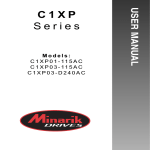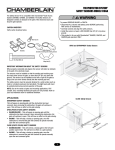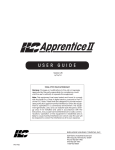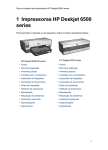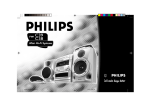Download Atkinson Dynamics AD-27 Specifications
Transcript
MODEL AD-28LD-MV CALL LISTEN UNIVERSITY PARK, IL USA TALK WARNING: DISCONNECT POWER BEFORE REMOVING COVER INSTALLATION AND SERVICE INSTRUCTIONS 2562445A REV. A 1108 Printed in U.S.A. INSTALLATION AND SERVICE INSTRUCTIONS FOR MODEL AD-28LD-MV SAFETY MESSAGE TO INSTALLERS, USERS AND MAINTENANCE PERSONNEL It is important to follow all instructions shipped with this product. This device is to be installed by a trained electrician who is thoroughly familiar with the National Electrical Code and will follow NEC Guidelines as well as local codes. The selection of the mounting location for the device, its controls and the routing of the wiring is to be accomplished under the direction of the facilities engineer and the safety engineer. In addition, listed below are some other important safety instructions and precautions you should follow: • This is not a Listed safety device and is not intended to be used as such. • Read and understand all instructions before installing or operating this equipment. • Disconnect power before connecting or doing any maintenance on this intercom. • All effective warning speakers produce loud sounds which may cause in certain situations, permanent hearing loss. You should take appropriate precautions such as wearing hearing protection. • After testing is complete, provide a copy of this instruction sheet to all operating personnel. • Establish a procedure to routinely check the intercom installation for integrity and proper operation. Any maintenance must be performed by a trained electrician in accordance with NEC guidelines and local codes. Failure to follow all safety precautions and instructions may result in property damage, serious injury, or death to you or others. -2- A. GENERAL FEATURES. The AD-28LD-MV intercom is a 2-way communications device designed for light duty industrial applications. Nominal operating voltages include 120/240 Vac, 50/60 Hz and 24 Vdc. Voltage changes for the 120/240VAC are internally switch selectable and the AC line is fused with a 1/2 amp 250 volt type GMC fuse. The unit also offers internally selectable balanced or unbalanced line operation, transformer isolated audio inputs and internally selectable Master or Slave mode configurations. A call button with remote call dry contacts is also factory supplied in the unit. The AD-28LD-MV has a Type 1 enclosure and is a UL Listed signal appliance. MASTER MODE: Each intercom can be configured as a Master unit (Push-to-Talk) or a Slave unit (Push-to-Listen) by changing the MAS/SLA jumper (J3) on the printed circuit board (see figure 1). The intercom comes from the factory set in the Master (MAS) mode. In the Master mode the intercom acts as an amplifier, constantly broadcasting over its speaker any signal that it receives on the signal lines. Holding down the Listen/Talk switch changes the unit from a speaker to a microphone (see figure 2). The intercom will now transmit over the signal lines to additional intercom(s) also set in the TO SPEAKER Q1 IC1 R4 T1 C3 H1 J1 S P K R C4 + CR1 C1 R1 C12 R5 C11 R6 R7 R2 R8 J6 R9 R10 R11 C H R12 R13 S W I T J3 T2 >SLA >MAS C13 C2 T3 SW1 120VAC 1/2A 250V GMC-1/2 F1 >BAL >UNB J4 J5 R17 CR4 CR5 CR6 CR7 R18 1 R19 K2 240VAC C15 C16 IC2 REPLACE WITH SAME TYPE FUSE ONLY TO SWITCH R20 R21 R22 C14 Q2 C9 K1 CR2 FUSE C10 R3 C5 H2 120VAC/240VAC SWITCH C6 C7 C8 R23 R24 R25 R26 C17 C18 C19 C20 MASTER/SLAVE JUMPER R27 R28 IC3 R29 R30 R31 R14 R15 R16 CR3 BAL/UNBAL JUMPER(2) R32 R33 CR8 Q3 C21 J7 C22 R34 V O L VOLUME CONTROL 24VDC IN/OUT GROUND CLASS II WIRING REMOTE CONTROL REMOTE + SPEAKER CM - EXT CALL CONTACT J2 2001290 A CLASS I WIRING 290A3076 Figure 1. -3- CALL LISTEN UNIVERSITY PARK, IL USA TALK WARNING: DISCONNECT POWER BEFORE REMOVING COVER 290A3077B Figure 2. master mode. When the switch is released it will default back to the Listen or Speaker mode, allowing the user to receive any messages transmitted back to it. The output amplifier offers full short circuit protection and over heat protection. SLAVE MODE: Some applications may require that the intercom constantly transmit (i.e., act as a microphone) as opposed to constantly receive (i.e., act as a speaker). To accomplish this the intercom must be switched into the Slave (Push-to-Listen) mode. WARNING Disconnect power to the intercom before any installation, maintenance, or configuration changes are performed. Move the J3 jumper block on the P.C. board from the MAS to SLA position (see figure 1). This can be done using long nose pliers, pulling the block off the “MAS” and center position and placing it on the “SLA” and center position. When hooked to a Master unit it may be necessary to override the Slave unit in order for the Master unit to be able to transmit. The remote control and ground lines must be connected between the Master and the Slave unit. Paragraph G. WIRING DIAGRAMS contains wiring diagrams of typical intercom configurations. -4- REMOTE CONTROL: Remote control is used to change the operation mode of a remote intercom from listen to talk or from talk to listen upon activation of a local intercom. The wiring diagram section illustrates Master/Slave Installation and Using Foot Switches Diagrams. (See figures 5 and 6.) Normally open foot switches can also be connected to the Remote Control line and ground in order to allow “hands free” operation of the listen/talk functions. CALL BUTTON AND CALL DRY CONTACTS TO EXTERNAL DEVICE: Depressing the call button sends a 1 kHz tone onto the signal lines. All units listening to the line will then broadcast this signal as a call. Depressing the call button also closes a normally open dry contact rated at 0.4 amps @ 125 Vac or 1.25 amps @ 24 Vdc. This contact can be used to trigger a remote sounder or light in order to accent the call feature. The wiring diagram illustrates how an external light or horn can be wired in to augment the call tone. (See figure 7.) CAUTION The call signal is substantially louder than normal voice messages being carried on the line. Do not depress the call switch while carrying on a conversation with someone on the system. This will subject the listener to very loud sound levels. 24 Vdc: The AD-28LD-MV is capable of sending DC power to another unit that is mounted in a remote location without local power. 24 Vdc is available from positions 6 and 7 of terminal block J7. It can be run along with the signal lines to an intercom in a remote location. Only one unit should share the power supply of another unit in any installation. Figure 8 in the wiring diagrams section shows how two intercoms can be hooked up if no remote power is available. CAUTION If an intercom is intended to be run off of a separate 24 Vdc supply, the output must be limited to 24 Vdc, 760 mA output. -5- J7 24VDC IN/OUT GROUND REMOTE CONTROL + J2 REMOTE SPEAKER COMMON PHASE - EXT CALL CONTACT GROUND CLASS I WIRING CLASS II WIRING 290A3078 Figure 3. ISOLATED BALANCED/UNBALANCED LINES: The audio signals are transmitted over a wire pair using balanced line technology. This means each wire carries a signal that is opposite in polarity of the other. At the input of the intercom is an isolated balanced line transformer. This transformer subtracts the two signals from each other providing an output free of noise generated onto the wires by some other noise source such as a motor or light fixture near the wires. The isolation provided by the transformer means that the grounds of the units are not connected by the audio lines. Therefore, ground loops and other problems caused by non-isolated systems are avoided. The polarity of the audio lines between the + and - signal terminals need not be maintained. A shielded cable can be used in installations where extreme problems from interference are suspected. The shield should always be connected to the ground of only one of the intercoms. Connecting the shield to ground at both ends will cause ground currents to travel through the shield which could cause hum in the system. There are several diagrams in the back of the manual to aid in wiring intercoms together. The wiring diagram section illustrates balanced and unbalanced line interconnection along with how a shielded audio cable can be used. (See figures 5 through 12.) It also illustrates -6- multiple intercom interconnections. MODEL AD-28LD-MV SPECIFICATIONS Operating Voltage 24 Vdc, 120Vac and 240 Vac 50/60 Hz Current Draw Voltage 24 Vdc 120 Vac 240Vac Operating 120 mA 80 mA 40 mA Standby 60 mA 60 mA 30 mA CAUTION: The 24Vdc input must be limited to 760 mA out if run from a supply. Amplifier Specifications Frequency Response (–6 dB)150 Hz to 12 kHz Input Impedance 3400 ohms Max. Output Voltage Sine Wave: Balanced Output 15 Vrms Unbalanced Output 7.5 Vrms Square Wave: Balanced Output 19 Vrms Unbalanced Output 9.5 Vrms Speaker Rating Speaker Impedance Temperature Range 2 watts 8 ohm −31 °F to +150° F (–35 °C to +66 °C) Fuse Type GMC-1/2 Call Switch Contact Rating 1/2 A, 250 V 400 mA @ 125 Vac 1.25 A @ 24 Vdc Agency Approvals UL, Type 1 Weight Shipping Net Housing Dimensions Conduit Entrances Housing Material Color 3 lb, 9 oz 3 lb, 2 oz 6.87" W x 8.00" H x 3.05" D Dual 1/2"-3/4" Knockouts Aluminum Black -7- B. UNPACKING. After unpacking the Model AD-28LD-MV, examine it for damage that may have occurred in transit. If the equipment has been damaged, do not attempt to install or operate it, file a claim immediately with the carrier stating the extent of the damage. Carefully check all envelopes, shipping labels and tags before removing or destroying them. Before attempting to install the intercom, be sure that all parts listed in the KIT CONTENTS LIST have been supplied. C. KIT CONTENTS LIST. Qty. Description Part Number 1 Instruction Manual 1 Resistor, 1 K, 1 W 2562445 K101216 D. MOUNTING. CAUTION The selection of the mounting location for the device, its controls and the routing of the wiring is to be accomplished under the direction of the facilities and the safety engineer. The intercom is intended to be mounted on any relatively flat and rigid surface by the four mounting holes in the interior of the housing. Figure 4 is a dimensional outline drawing showing the proper mounting configuration. The four mounting holes are 0.202 in diameter and are designed to accept a #10 mounting screw. Hardware for mounting the intercom to the surface is left up to the installer. The intercom housing has two combination 1/2"-3/4" knockouts in the bottom. When installing the conduit to these openings, choosing the size and type of connector is left up to the installer. E. ELECTRICAL CONNECTIONS. WARNING Do not connect wires when power is applied. The intercom has two wiring compartments, one for Class I wiring and the second for Class II wiring. All wiring to the intercom is terminated at two pc board mounted terminal blocks provided. The AC Phase and Common, along with Earth Ground, are landed in a -8- three-position terminal block (J2) in the Class I wiring compartment. The signal lines, remote control lines, remote power, and call dry contacts are landed in a seven-position terminal block (J7) in the Class II wiring compartment. The two wiring sections are isolated by a fishpaper barrier. WARNING Disconnect power to the intercom before any installation, maintenance, or configuration changes are performed. There are three jumpers shown on the PC board in Figure 7 that may need to be moved depending on the desired operation of the intercom. J4 and J5 are for operating the intercom in either a balanced signal line or unbalanced signal line configuration. These must be moved together as a pair. They are factory set in the balanced line position. J3 is for configuring the intercom as either a master or slave device. The intercom is factory set in the master position. There is a switch on the board, in the Class I wiring compartment, to configure the operation of the board from 120 Vac to 240 Vac. The switch is factory set for the intercom to operate on 120 Vac (see figure 3). See figures 5 through 12 for typical intercom configurations. F. SERVICE. CAUTION Any maintenance must be performed by a trained electrician in accordance with NEC guidelines and local codes. 1. General. CAUTION The call signal is substantially louder than normal voice messages being carried on the line. Do not depress the call switch while carrying on a conversation with someone on the system. This will subject the listener to very loud sound levels. Federal Signal will service your equipment or provide technical assistance with any problems that cannot be handled locally. Any units returned to Federal Signal for service, inspection, or repair must be accompanied by a Return Material Authorization. This R.M.A can be obtained from the local Distributor or Manufacturer’s Representative. -9- 8.00 7.125 CALL LISTEN UNIVERSITY PARK, IL USA TALK WARNING: DISCONNECT POWER BEFORE REMOVING COVER BACK FRONT CLASS I WIRE ENTRY 3.50 5.50 4 x .202 COMBINATION 1/2"-3/4" KNOCK-OUT 3.05 CLASS II WIRE ENTRY 1.40 BOTTOM 6.87 290A3079B Figure 4. At this time a brief explanation of the service requested or the nature of the malfunction, should be given. Address all communications and shipments to: Service Dept. Atkinson Dynamics Federal Signal Corp. 2645 Federal Signal Dr. University Park, IL 60466-3195 2. Replacement Parts. WARNING Replace fuse with GMC-1/2 only. DO NOT substitute. Description Part Number Resistor, 1 K, 1 W Fuse, GMC-1/2 Mini-jumpers PCBA Switch Speaker K101216 K148A155 K139A209 K2001290 K122283 K132141 -10- G. WIRING DIAGRAMS. INTERCOM I AD-28LD-MV MASTER MASTER/SLAVE INSTALLATION INTERCOM II AD-28LD-MV SLAVE J7 J7 24 VDC 7 7 24 VDC GROUND 6 6 GROUND REMOTE 5 5 REMOTE AUDIO + 4 4 AUDIO + AUDIO - 3 3 AUDIO - DRY CONTACT 2 2 DRY CONTACT DRY CONTACT 1 1 DRY CONTACT 3 NEUTRAL 2 HOT 1 EARTH GND. 1K 1 WATT J2 NEUTRAL 3 HOT 2 EARTH GND. 1 J2 AC AC 290A3080B Master Slave Installation In this installation, the Master is constantly broadcasting audio from the Slave. Pushing the listen/talk switch on either unit forces the Slave into the listen mode and the Master into the talk mode. The MAS/SLA jumper must be placed in the SLA mode for this operation on the slave unit. Figure 5. INTERCOM I AD-28LD-MV MASTER J7 USING FOOT SWITCHES FOOT SWITCH N.O. FOOT SWITCH N.O. INTERCOM II AD-28LD-MV SLAVE J7 24 VDC 7 7 24 VDC GROUND 6 6 GROUND REMOTE 5 5 REMOTE AUDIO + 4 4 AUDIO + AUDIO - 3 3 AUDIO - DRY CONTACT 2 2 DRY CONTACT DRY CONTACT 1 1 DRY CONTACT 3 NEUTRAL 2 HOT 1 EARTH GND. 1K 1 WATT J2 NEUTRAL 3 HOT 2 EARTH GND. 1 J2 AC AC 290A3081B Using Foot Switches Using normally open, simple contact closure foot switches (customer supplied) allows for total hands free operation of the listen/talk functions. Figure 6. -11- INTERCOM I AD-28LD-MV MASTER 24 VDC 7 GROUND 6 REMOTE J7 USING CALL DRY CONTACTS WITH AC INTERCOM II AD-28LD-MV SLAVE J7 1K 1 WATT 7 24 VDC 6 GROUND 5 5 REMOTE AUDIO + 4 4 AUDIO + AUDIO - 3 3 AUDIO - DRY CONTACT 2 2 DRY CONTACT DRY CONTACT 1 1 DRY CONTACT POWER J2 NEUTRAL 3 HOT 2 EARTH GND. 1 POWER AC AC J2 3 NEUTRAL 2 HOT 1 EARTH GND. 290A3082B Using Call Dry Contacts with AC The dry contacts can be used to switch devices such as an auxiliary sound or light when call is depressed. The maximum ratings for the dry contacts are .4 amps @ 125VAC and 1.25 amps @ 24VDC. This method assures a call is received even when the volume on one of the intercoms is turned all the way down. Figure 7. INTERCOM I AD-28LD-MV MASTER J7 24 VDC 7 NO REMOTE POWER AVAILABLE INTERCOM II AD-28LD-MV SLAVE J7 7 24 VDC GROUND 6 6 GROUND REMOTE 5 5 REMOTE AUDIO + 4 4 AUDIO + AUDIO - 3 3 AUDIO - DRY CONTACT 2 2 DRY CONTACT DRY CONTACT 1 1 DRY CONTACT 3 NEUTRAL 2 HOT 1 EARTH GND. 1K 1 WATT J2 NEUTRAL 3 HOT 2 EARTH GND. 1 J2 AC 290A3083B No Remote Power Available Intercom I supplies the DC power to the second intercom. Earth ground must be wired on the second unit. Figure 8. -12- INTERCOM I AD-28LD-MV MASTER BASIC BALANCED LINE SYSTEM INTERCOM II AD-28LD-MV SLAVE J7 J7 24 VDC 7 7 24 VDC GROUND 6 6 GROUND REMOTE 5 5 REMOTE AUDIO + 4 4 AUDIO + AUDIO - 3 3 AUDIO - DRY CONTACT 2 2 DRY CONTACT DRY CONTACT 1 1 DRY CONTACT 3 NEUTRAL 2 HOT 1 EARTH GND. 1K 1 WATT J2 NEUTRAL 3 HOT 2 EARTH GND. 1 J2 AC AC 290A3084B Basic Balanced Line System This is a simple system with only two conductors connected between the units. AC power is utilized at both sites. The Unit is factory configured for balanced line operation. (NOTE: both jumpers in BAL position.) Figure 9. INTERCOM I AD-28LD-MV MASTER J7 24 VDC 7 SHIELDED BALANCED LINE SYSTEM INTERCOM II AD-28LD-MV SLAVE J7 7 24 VDC GROUND 6 6 GROUND REMOTE 5 5 REMOTE AUDIO + 4 4 AUDIO + AUDIO - 3 3 AUDIO - DRY CONTACT 2 2 DRY CONTACT DRY CONTACT 1 1 DRY CONTACT 3 NEUTRAL 2 HOT 1 EARTH GND. 1K 1 WATT J2 NEUTRAL 3 HOT 2 EARTH GND. 1 J2 AC AC 290A3085B Shielded Balanced Line System This system offers maximum isolation from noise over long runs. The shield should only be grounded at one side. AC power is utilized at both sites. The unit is factory configured for balanced line operation. (NOTE: both jumpers in BAL position.) Figure 10. -13- INTERCOM I AD-28LD-MV MASTER 24 VDC 7 GROUND 6 REMOTE 5 AUDIO + 4 AUDIO - 3 DRY CONTACT 2 DRY CONTACT 1 BASIC UNBALANCED LINE SYSTEM J7 AC 1K 1 WATT AUDIO CABLE GROUND J2 NEUTRAL 3 HOT 2 EARTH GND. 1 AC 290A3086B Basic Unbalanced Line System This configuration is used when hooking to other products on the market. This system does not offer the same level of noise isolation as a balanced line system and should only be used when hooking to existing devices. The neighboring jumpers on the circuit board must be changed from the BAL position to the UNB position for these installations (see figure 1). Figure 11. -14- INTERCOM I AD-28LD-MV MASTER 24 VDC 7 GROUND 6 REMOTE 5 AUDIO + MULTIPLE INTERCOMS INTERCOM 2 AD-28LD-MV SLAVE J7 J7 7 24 VDC 6 GROUND 5 REMOTE 4 4 AUDIO + AUDIO - 3 3 AUDIO - DRY CONTACT 2 2 DRY CONTACT DRY CONTACT 1 1 DRY CONTACT NEUTRAL 3 3 NEUTRAL HOT 2 2 HOT EARTH GND. 1 1 EARTH GND. INTERCOM 3 310-MV MASTER INTERCOM 4 310X-MV SLAVE 1K 1 WATT J2 J2 AC AC DRY CONTACT 10 10 DRY CONTACT DRY CONTACT 9 9 DRY CONTACT AUDIO - 8 8 AUDIO - AUDIO + 7 7 AUDIO + REMOTE 6 6 REMOTE GROUND 5 5 GROUND 24 VDC 4 4 24 VDC NEUTRAL 3 3 NEUTRAL HOT 2 2 HOT EARTH GND. 1 1 EARTH GND. AC AC Multiple Intercoms 290A3087B Multiple intercoms can be tied to one line. Depressing talk on any unit will broadcast audio over all other units. (NOTE: only one line resistor needs to be installed on the line for any installation.) Figure 12. -15-

















